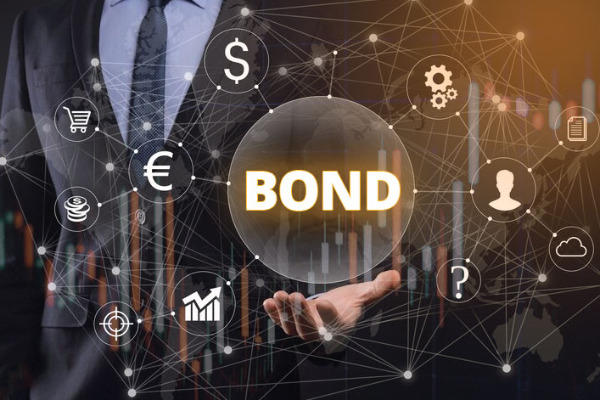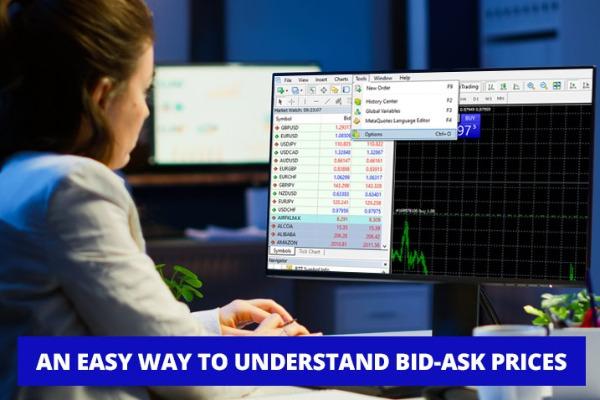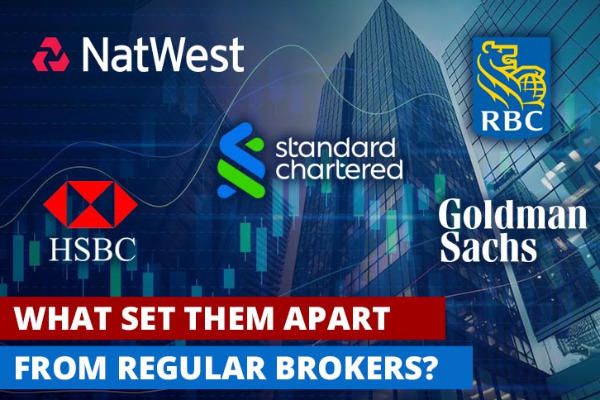The forex market is actually not as dangerous as you like to think. Here are some strategies to minimize currency risk that you can try.

Since the beginning, forex trading has been a very risky activity. First, the price direction is quite unpredictable. Second, there are so many things that can impact the price movement. When you have learned about the forex market, you will learn about several risks existing in the currency market.
As such, you would need to apply certain strategies that correspond to each risk. Some of them are:
- Fundamental analysis in relation to economic risks.
- Technical analysis in relation to price risks.
- Risk management in relation to volatility risks.
- Choose a broker carefully in relation to counterparty risks.
- Avoid overtrading in relation to psychological risks.
In this article, they will be explained one by one.
1. Analyze the Fundamental Side to Minimize Economic Risks
Economic risks in the currency market refers to economic conditions that could influence the currency price movement, whether domestic, global, or even both. When the economy takes a downturn, investors tend to short the related currency to avoid further loss.
Overall, here are some of the implications of the economic risks for currency markets:
- Market volatility: Sharp swings in currency prices that make it difficult to trade profitably.
- Information asymmetry: Market participants may have different access to or interpretation of economic data, which can lead to unfair or inefficient price movements.
- Delayed reaction: Data release may not immediately impact currency prices, and the market may take time to digest the information fully.
- Reaction to rumors: Economic news may be preceded by rumors or speculation, which can lead to false price movements.
To minimize economic risks, traders are highly recommended to learn fundamental analysis. Generally, it reflects the aspects of the economic condition of a country.
Professional traders will trade on currencies based on the fundamental analysis. They analyze currency movements based on economic data and other aspects that could affect a country's stability. Monetary policies and other economic indicators, like inflation rate, GDP growth, manufacturing index, and the unemployment rate, are also included in their data list.
2. Apply Technical Analysis to Minimize Price Risks
Price risks in the currency market mean the potential for the value of a currency to fluctuate, leading to financial gains or losses for market participants. It's almost impossible to correctly predict the currency price movement in advance, so there's always the risk of losing trades due to unexpected price fluctuations.
Although it may not work 100% of the time, most traders have used technical analysis for years to recognize trends and patterns in the currency price chart to help them predict the next movement and capitalize on that.
Usually, the market moves in one of three trends: uptrend, downtrend, or sideways. It happens because a repetition of the past tends to happen again in the future.
In other words, technical analysis is one of the best ways to minimize currency risk. Technical analysis will significantly assist traders in predicting where the market will move based on data from the past. To sharpen the analysis, traders will use technical tools and indicators.
But, using too many technical indicators can negatively affect your trading performance. These include:
- Signal confusion: When using multiple indicators, it can be difficult to identify the most important signals. This can lead to you making poor trading decisions.
- Overfitting: Technical indicators are designed to identify patterns in historical price data. However, if you use too many indicators, you may be more likely to find patterns that are not there. This can lead to false signals and losses.
- Loss of focus: When using too many indicators, staying focused on the big picture cannot be easy. This can lead to you missing important trading opportunities.
A good technical analysis is usually set up with the following matters:
- Major support and resistance levels
- Trend indicators like moving averages and trend lines, to identify trends and judge the price strength
- Reversal of trends
- Chart patterns and what they mean
3. Have Good Risk Management to Minimize Volatility Risks
Volatility risks in the currency market refer to the possibility of sudden and extreme price changes that may lead to immediate losses. The drastic price movement tends to come so unexpectedly that it can't be measured in advanced by fundamental or technical analysis.
When preventive steps don't work anymore, the only way you can minimize risks is making sure that the losses are limited and still within your tolerance. That's where risk management in forex trading comes from.
Without it, your account would suffer from unpredictable losses. Here are some of the risks of not having good risk management in the currency market:
- Losing money: If you do not manage your risk properly, you could lose much money in the currency market. The currency market is volatile, and prices can fluctuate wildly. If you are not careful, you could get caught in a losing trade and lose a lot of money.
- Going bankrupt: This is especially true if you use leverage when you borrow money to trade. If the currency's price moves against you, you could lose more money than you have deposited. This could lead to a margin call when your broker demands that you deposit more money into your account.
- Increased stress: Trading without proper risk management can increase stress levels. This is because you constantly worry about losing money and making bad trades. The stress can be so overwhelming that it can affect your personal and professional life.
- Addiction: Trading without proper risk management can also lead to addiction. This is because the adrenaline rush of making a winning trade can be addictive. If you are not careful, you may be trading more and more, even when you are not making money.
You can take advantage of the built-in features of the MT4 or MT5, like Stop Loss, Take Profit, and Trailing Stop.
Trailing Stop is a feature many brokers offer to complete traders' risk management further. It is very helpful in adjusting Stop Loss and Take Profit levels more systematically and automatically while the position is still running. The distance between SL and the current price can be determined in pips, such as 15 pips, 20 pips, 30 pips, and so on.
But remember that Trailing Stops are most effective when applied in a trending market, i.e., when the price moves up or down consistently. This feature is not recommended in a sideways or ranging market because your position would hit the Stop Loss before accumulating significant profits.
4. Choose the Right Broker to Minimize Counterparty Risks
Counterparty risks in the currency market is the potential for a counterparty to default on a forex transaction. The counterparty here refers to a side you open trades with, so brokerage companies is the simple term to understand it. This type of risk mostly comes from the fact that there are numerous fraudulent and scam brokers that may steal your money away. There are also cases when the brokers might not be scams but they went into default high volatility markets that take out their balance.
Similar to how technical analysis may help you minimize price risks, making sure that you trade in a good broker can be a proper solution to support you in minimizing counterparty risks.
You need to learn how to choose the right broker that is not only in line with your trading conditions but is also experienced, reliable, and comply with official financial regulator(s).
In a sense, here are some essential factors to consider when choosing a forex broker:
- Regulation and Security: Ensure the broker is regulated by a reputable financial authority in their country of operation. Regulatory bodies such as the Financial Conduct Authority (FCA) in the UK, the National Futures Association (NFA) in the US, and the Australian Securities and Investments Commission (ASIC) impose rules to protect investors' interests. Regulated brokers are more likely to adhere to strict financial standards and provide a safer trading environment.
- Reputation and Reliability: Research the broker's reputation and track record in the industry. Look for reviews and feedback from other traders to gauge their experiences. A reliable broker should have a history of prompt and accurate order execution, transparent pricing, and good customer support.
- Trading Platform: Assess the trading platform offered by the broker. It should be user-friendly, stable, and equipped with the necessary tools for technical analysis and trading. Consider whether it's accessible on various devices like desktop, mobile, and web-based platforms.
- Spreads and Commissions: Compare the spreads (the difference between the bid and ask price) and commissions charged by different brokers. Lower costs can have a significant impact on your overall profitability, especially for frequent traders.
- Currency Pairs and Instruments: Ensure that the broker offers a wide range of currency pairs and other financial instruments you intend to trade. Some brokers may also provide access to other markets like commodities, indices, and cryptocurrencies.
- Leverage: Consider the leverage offered by the broker. Leverage allows you to control larger positions with a smaller capital outlay, but it also increases risk. Make sure you understand the implications of using leverage and choose a level that aligns with your risk tolerance and trading strategy.
- Deposit and Withdrawal Options: Check the deposit and withdrawal methods supported by the broker. Look for brokers that offer convenient and secure options for funding your account and withdrawing profits.
- Customer Support: Evaluate the broker's customer support services. Quick and responsive customer support is essential in case you encounter technical issues or have questions related to trading.
- Educational Resources: Some brokers offer educational materials, webinars, and tutorials to help traders improve their skills and knowledge. If you are a beginner, these resources can be valuable in getting started.
- Demo Account: A demo account allows you to practice trading with virtual funds and test the broker's platform before committing real money. Consider brokers that offer demo accounts to familiarize yourself with their services.
- Slippage and Order Execution: Look for information on the broker's order execution policy and potential slippage during volatile market conditions. Efficient and transparent order execution is crucial for active traders.
By carefully considering these factors, you can find a forex broker that suits your trading needs and preferences. Remember that each trader is unique, so it's essential to assess your individual requirements and goals when making your decision.
5. Avoid Overtrading to Minimize Psychological Risks
Psychological risks in the currency market refer to the emotional and cognitive challenges that traders and investors face when participating in forex trading. These risks can have a significant impact on decision-making, trading performance, and overall profitability.
Here are some common psychological risks in the currency market:
- Fear of missing out (FOMO): FOMO is the feeling that you will miss out on a profitable trade if you don't enter the market. This can lead to you making impulsive trades, even if you don't have a good trading plan.
- Greed: Greed is the desire to quickly make as much money as possible. This can lead to you taking on too much risk, ultimately leading to losses.
- Impatience: Impatience is the inability to wait for a good trade setup. This can lead to you entering trades too early or too late, leading to losses.
- Emotional trading: Emotional trading is when you make trading decisions based on your emotions, such as fear or anger. This can lead to poor trading decisions that cost you money.
Avoid entering the market when the profit target has been met. Most of the time, psychological risks come from the traders' inability to stay put. Too many entries in the market will harm psychology, so it's best to avoid overtrading.
Overtrading is a common problem among currency traders in which they tend to open too many positions or increase their trading sizes outside of their trading plans.
Avoiding overtrading would minimize psychological risks in the currency market as it would help you to think clearly and logically when you don't have too much at stake. As such, you would not have the fear of missing out, greed, impatience, and execute emotional trading. Just follow your trading plan faithfully, waiting for the best opportunities patiently, and stay realistic.
Bottom Line
Currency movement is a reflection of the economic condition of a country. The price can be very volatile when fundamental changes relate to the country. These extreme currency movements can be an opportunity for retail forex traders and a disaster if not analyzed carefully. Some of the strategies above could help novice traders minimize currency risks and avoid devastating losses.
It's not as difficult as you think since you can start by learning how fundamental, technical, risk management, and choose a good broker, and avoid overtrading when things don't go your way.

 Dedicated FREE FOREX VPS
Dedicated FREE FOREX VPS Free FOREX Virtual Private Server
Free FOREX Virtual Private Server MT4 Demo Contest, Get $500
MT4 Demo Contest, Get $500 Sign Up for an Account, Claim 60% Deposit Bonus
Sign Up for an Account, Claim 60% Deposit Bonus Free MT4/MT5 VPS 2024
Free MT4/MT5 VPS 2024 Send E-mail and Get Free Merchandise
Send E-mail and Get Free Merchandise $1K Refer a Friend Bonus for Pepperstone Pro clients
$1K Refer a Friend Bonus for Pepperstone Pro clients Maximize Your Earnings with 100% Deposit bonus
Maximize Your Earnings with 100% Deposit bonus Trade to Win, $5,000 Monthly Demo Contest
Trade to Win, $5,000 Monthly Demo Contest Claim 30% + 15% Deposit Bonus from LiteFinance
Claim 30% + 15% Deposit Bonus from LiteFinance












2 Comments
Ian Drinkwater
Nov 15 2022
I don't think the hedging technique is perfect for me, as you said it's very difficult and very tricky. I guess you have to understand the basics of hedging too. In addition, some brokers do not allow you to use this technique because the regulations of some countries prohibit this trading method. But I guess apart from this point, the other 4 points are really important and very basic for Forex trading management and it's easy to follow your steps as I am also following your advice. Thanks for the article!
Ariana
Nov 24 2022
Great article! Very accurate and very realted to beginner's problem. And all the tips except overtrading, I think every beginner follows these tips and most of them still fail. All because of overtrade. For me when trading it is more important not to overtrade it. I think overtrading is related to the failure of trading. Most of beginner traders overtrade because they want to get more profit, but they must know that trading volume is limited and tied to capital, so overtrading can cause margin calls. Because there is More capital, more volume you can trade and less capital, less trading volume you can trade.So, It is important to limit the trading volume